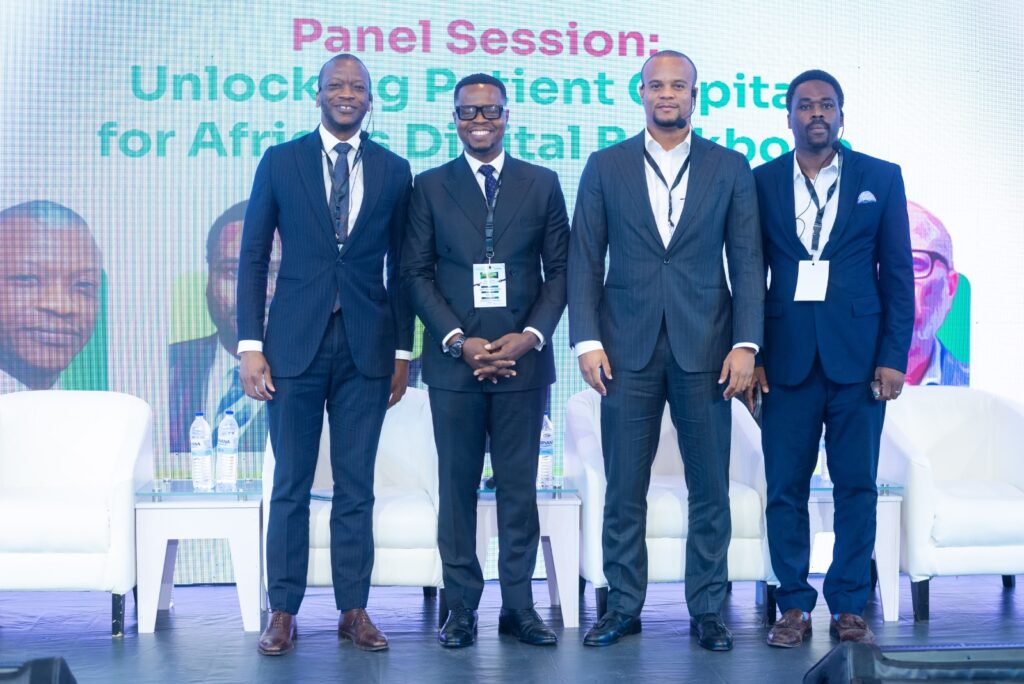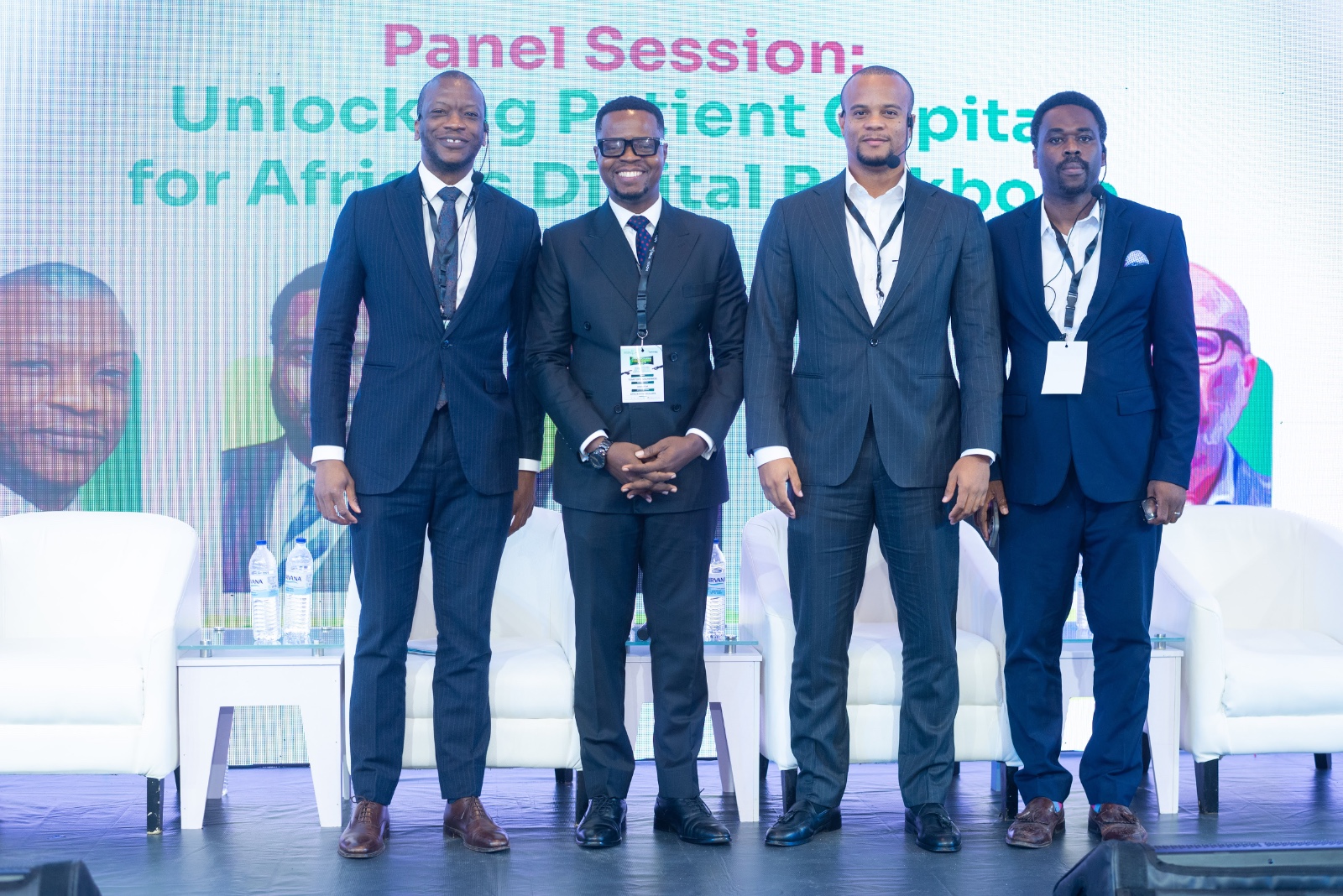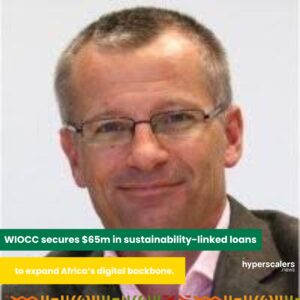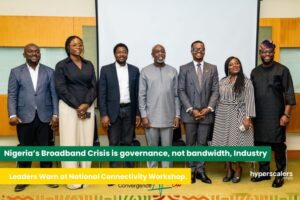Africa’s digital transformation won’t be decided by technology alone but by the availability of long-term, patient capital to fund fiber, data centers, and cloud infrastructure. That was the message from the funding panel at Hyperscalers Convergence Africa in Lagos recently, which examined how to mobilize domestic savings and de-risk projects so they attract global investors at scale.
Speakers included Chinyerugo Ugoji, Partner, AELEX (moderator); Oguche Agudah, pioneer Chief Executive Officer, Pension Fund Operators Association of Nigeria (PenOp) and Head of Programs, Pan Africa Fund Managers Alliance; Shayo Olumide, Vice President, Heavy Industries, Telecoms & Technology, Africa Finance Corporation (AFC); Ben Roberts, Principal, Digital Economy Advisor; and Vivek Mittal, Chief Executive Officer, Africa Infrastructure Development Association.
“Funding is the critical piece of the puzzle to bridging Africa’s digital infrastructure gap,” Ugoji said, opening a discussion that centered less on perceived country risk and more on the bankability of individual projects.
Panelists argued that many proposals fail before they reach lenders. “A project isn’t bankable until you understand and allocate risk properly,” said Shayo Olumide, Vice President for Heavy Industries, Telecoms & Technology at the Africa Finance Corporation (AFC). He said AFC is pushing earlier into the lifecycle – funding feasibility studies, land acquisition, and structuring – so projects are financeable before syndication.
Pension and institutional money remain largely untapped. Oguche Agudah, former CEO of the Pension Fund Operators Association of Nigeria (PenOp) and now head of programs at the Pan Africa Fund Managers Alliance, noted that less than 1% of Nigeria’s roughly ₦24 trillion in pension assets is invested in infrastructure. Recent rule changes have loosened caps on infrastructure funds and trimmed the share steered into government securities. “The regulator has done its part; now the market must respond,” he said, calling for capacity building so trustees and asset managers gain comfort with digital-infrastructure risk.
Vivek Mittal, CEO of the Africa Infrastructure Development Association, said pension-led financing will follow policy confidence and practical liquidity mechanisms. He pointed to Canada and Australia, where retirement funds became anchor investors after markets shifted from short-term government paper to long-dated, yield-based instruments. “De-risking and bankability ultimately come down to one word: revenue. Build it and they will come doesn’t work,” he said.

That revenue challenge is sharper in digital than in power or transport, said Ben Roberts,Principal, Digital Economy Advisors. “Unlike power projects where PPAs guarantee revenue from day one, data centers rely on future users, and ‘build it and they will come’ doesn’t always work,” he said. Reliability, he added, is what creates both user and investor confidence.
High borrowing costs at home compound the problem. With local rates often above 17%, panelists urged blended finance – combining concessional loans, guarantees, and equity – to lower the overall cost of capital and crowd in private money. Mittal and Roberts also pushed for mobilizing domestic savings, insurance pools, and diaspora funds, citing Kenya’s Hudi as an example of retail participation in infrastructure.
Beyond capital, governance and coordination matter. Projects stall, Mittal said, when “lawyers, contractors and regulators aren’t practiced at working together,” leading to multi-year delays. Olumide urged governments to standardize permits and right-of-way fees and to enforce contracts to reduce uncertainty along national backbones and metro builds.
The panel outlined near-term moves to unlock patient capital, such as creating regional project-preparation facilities for feasibility and de-risking; channeling a larger share of pension and institutional funds into infrastructure under clear prudential rules; deploying blended-finance structures and government-backed guarantees where appropriate; and strengthening policy consistency and transparency to narrow Africa’s risk premium.
The speakers agreed that the demand for bandwidth and compute is surging, but projects will not clear investment committees until they are structured around credible revenues, reliable service and enforceable rules. As Ugoji put it, Africa’s digital future is “financeable” – but only if the ecosystem shifts from ambition to bankable, repeatable models that give long-term investors confidence to commit and stay.
Hyperscalers Convergence Africa 2025 was convened by Africa Hyperscalers and sponsored by Nokia, Open Access Data Centres (OADC), IHS Towers, Vertiv, Equinix, and the National Information Technology Development Agency (NITDA).
Ready to dive deeper into the hyperscale revolution impacting Africa?
READ MORE HERE: www.africa.hyperscalers.news
Contact Us:
Email: projects@hyperscalers.newsPhone: +2348109003350
Follow us on Social Media: Instagram, Facebook, LinkedIn, x





